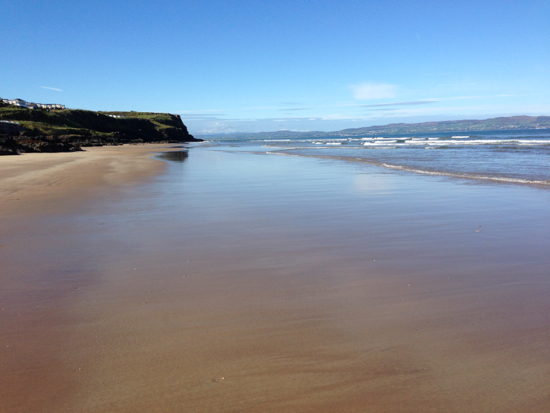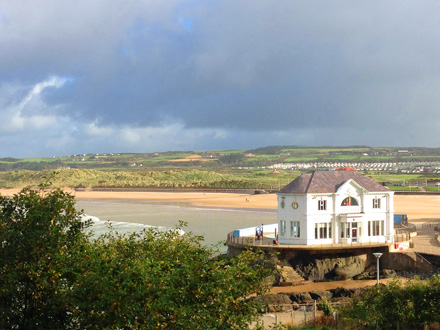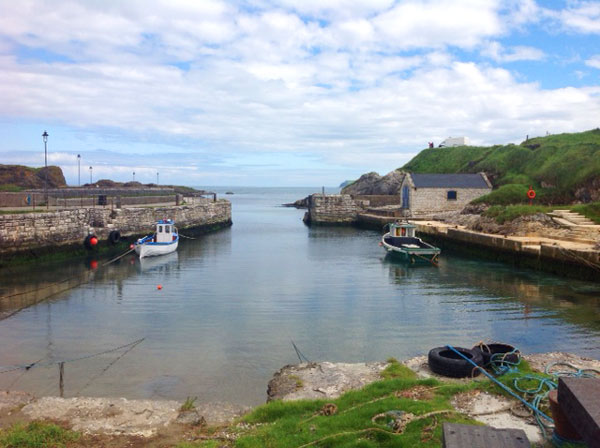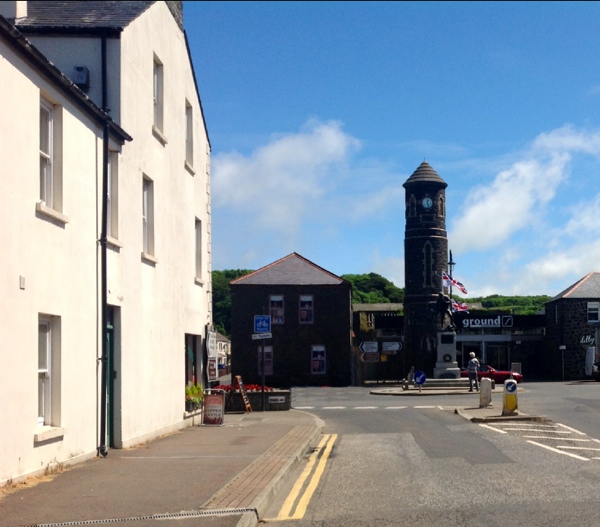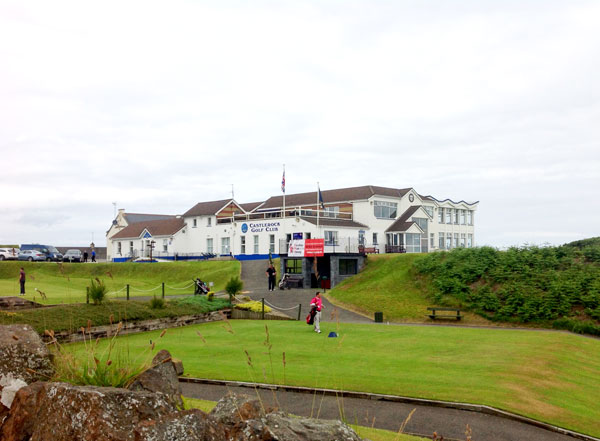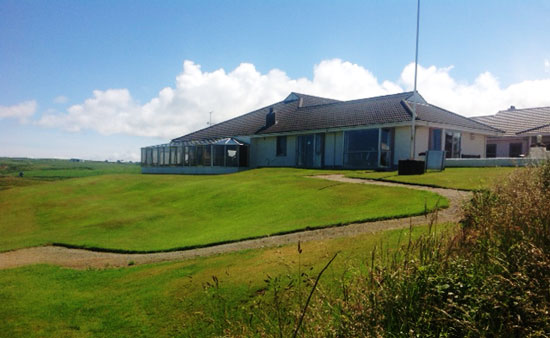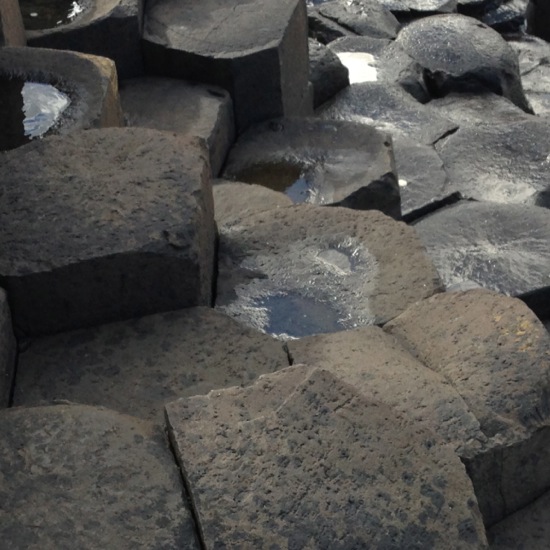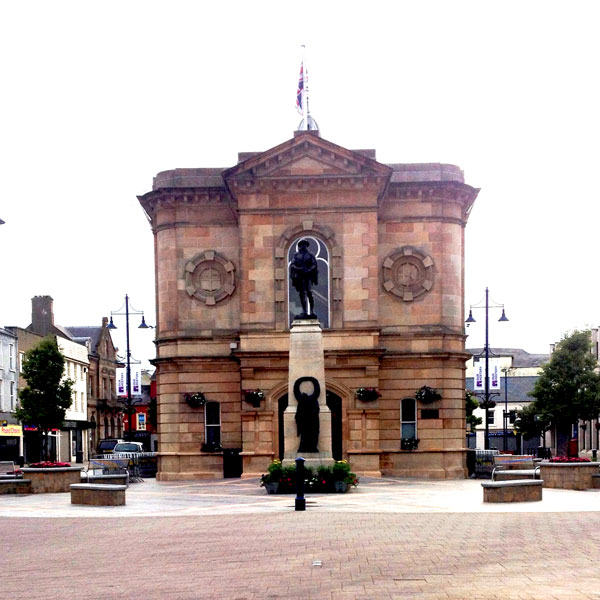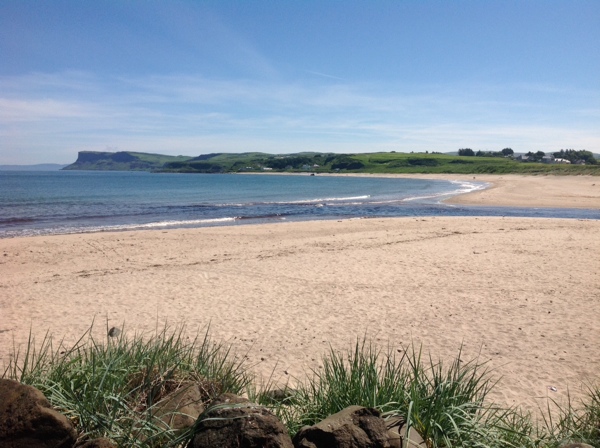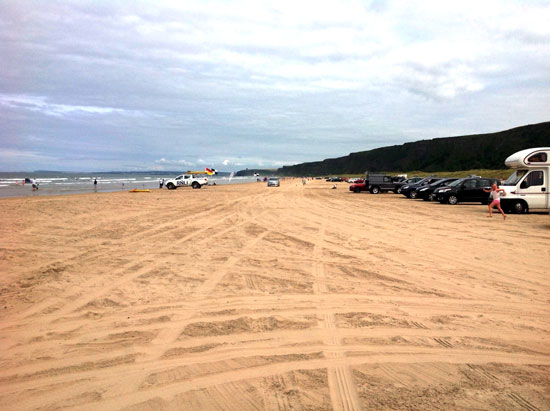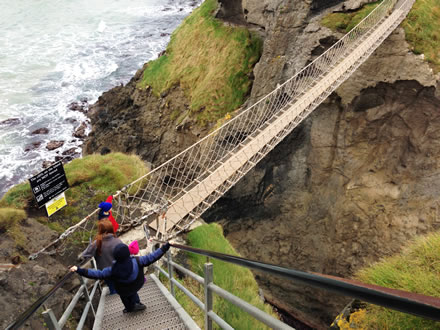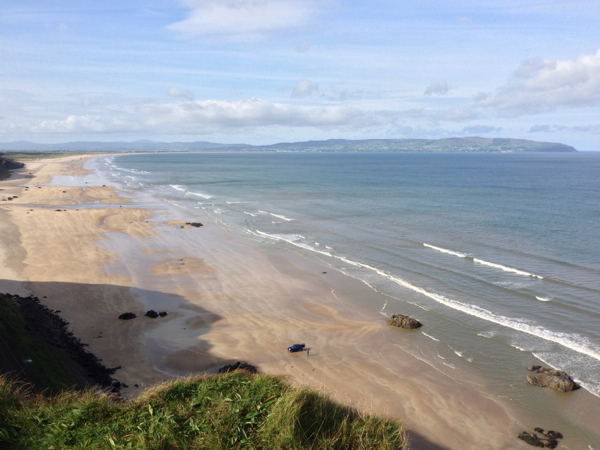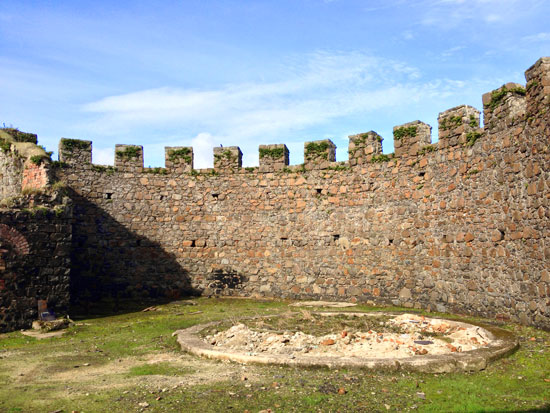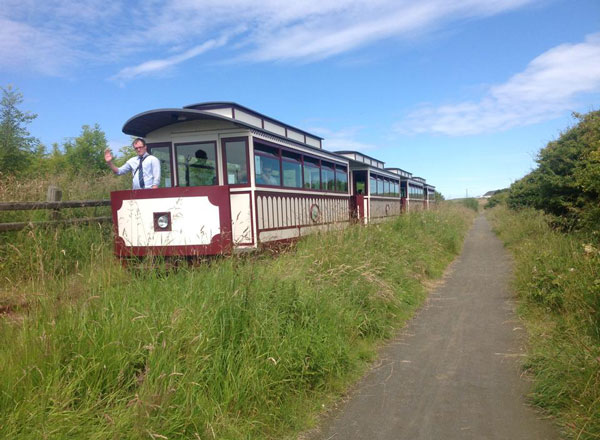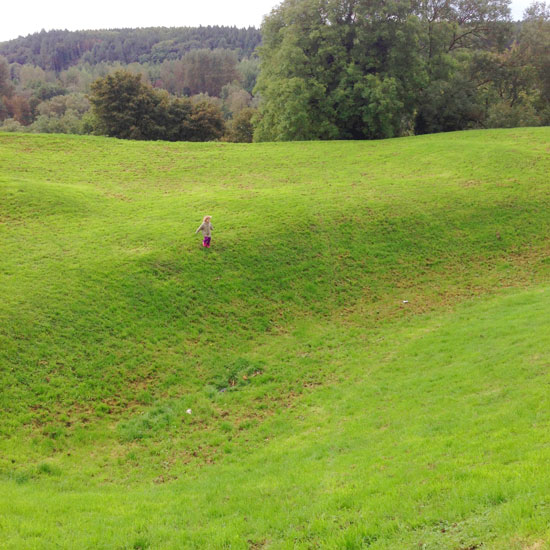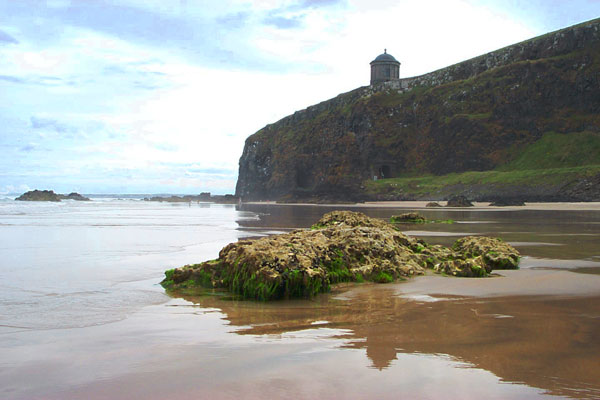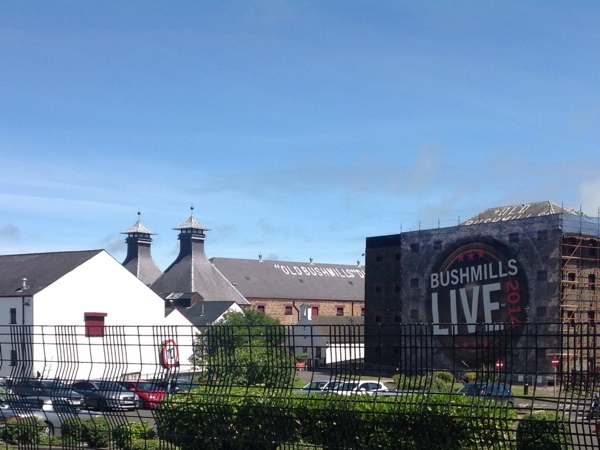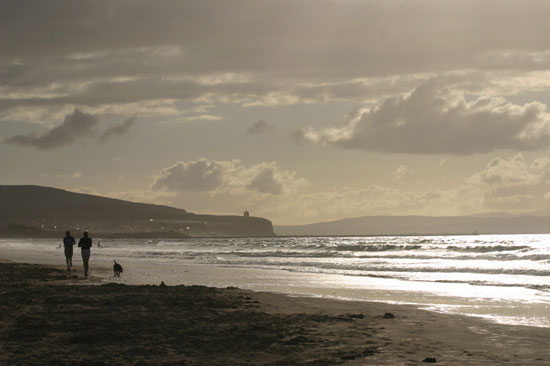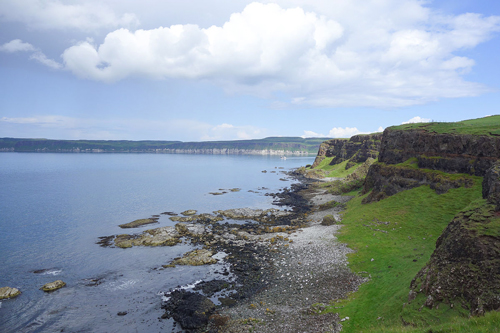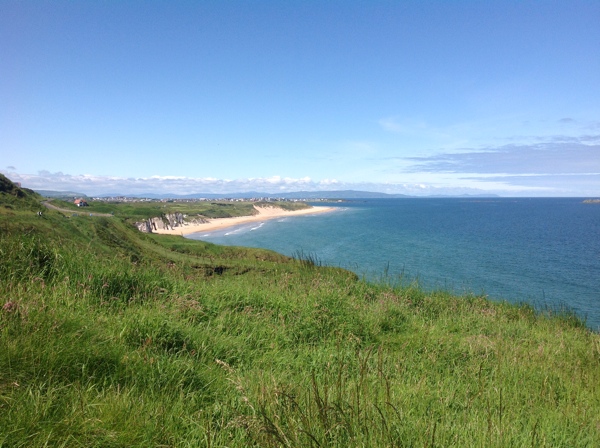Dunluce Castle
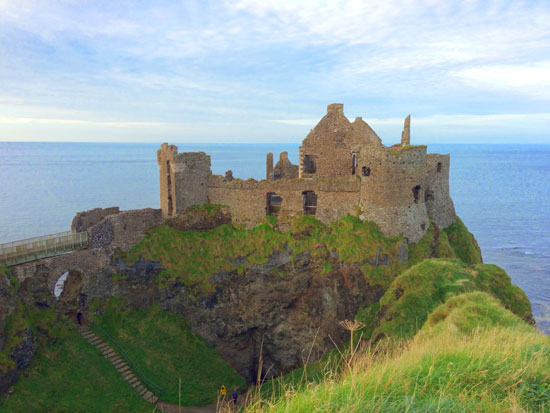
Dunluce Castle is located on the sheer cliffs east of Portrush along the Causeway Coast towards the Giants Causeway. It was built sometime between the 1400s and 1600s and was one of the finest castles on the Coast and offers a unique insight into Irelands past. You can meander around the ruins of the castle and descend a stairway, external to the castle grounds, to visit the cave beneath Dunluce.
Jump down to:
Dunluce Castle MapVisit Dunluce Castle, a living history of the Causeway Coast
 No visit to the Causeway Coast is complete without a visit to Dunluce Castle! Tucked away on a cliffside west of the Giant's Causeway, Dunluce offers a unique insight into what life was like in Ireland 'back in the day'.
No visit to the Causeway Coast is complete without a visit to Dunluce Castle! Tucked away on a cliffside west of the Giant's Causeway, Dunluce offers a unique insight into what life was like in Ireland 'back in the day'.
Fun for adults and children alike, there are hidden historical secrets awaiting you throughout the castle, and the guide you'll receive upon entry will help you on your journey into the unique history of Dunluce. There is also an excellent multi-media presentation at the Dunluce welcome centre.
Dunluce for Kids?
Dunluce Castle is safe for children, though we would not recommend having them out of your sight. This is a cliffside ruins, after all! Though cobbled from the drawbridge onward, there is disabled access all throughout the castle site. It is also an easy walk for elders and young children with many places to sit and rest if necessary.
Though we've visited many times, there is always something new to discover or appreciate about this amazing structure.
Narnian?
 Our boys were especially excited to visit the (possible) inspiration for the famous "Cair Paravel" from CS Lewis' Chronicles of Narnia series.
Our boys were especially excited to visit the (possible) inspiration for the famous "Cair Paravel" from CS Lewis' Chronicles of Narnia series.
Our ten-year-old was engaged in the legends of Dunluce while our two younger children explored the turrets, rooms and ruins of this amazing relic. The views from Dunluce are spectacular and
Who owned Dunluce?
Several family 'clans' ruled Dunluce including the MacQuillans, the MacDonnells and Scottish settlers who inhabited the town of Dunluce, though it was Richard Od de Burgh, the second Earl of Ulster who built the first castle at Dunluce.

Building Dunluce Castle
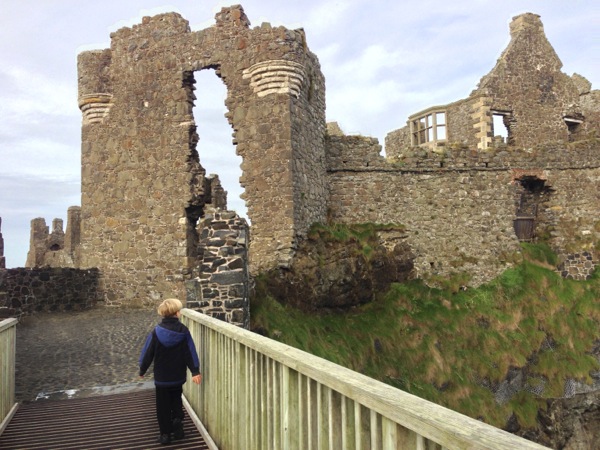 Erected by Richard Og de Burgh who was also known as "The Red Earl", one of the most powerful Irish nobles of the 1400's, we owe him for his choice of location along the Coast. Richard was famous in his own right as the highest ranked Earl in Ireland, and his daughter Elizabeth became the second wife of King Robert the Bruce of Scotland.
Erected by Richard Og de Burgh who was also known as "The Red Earl", one of the most powerful Irish nobles of the 1400's, we owe him for his choice of location along the Coast. Richard was famous in his own right as the highest ranked Earl in Ireland, and his daughter Elizabeth became the second wife of King Robert the Bruce of Scotland.
Thus "The Red Earl" started the (quite dramatic) history of Dunluce Castle and townsite, which you can learn all about in the well-documented information given out by the Dunluce visitors centre upon arrival.
 The major excavation of the "lost town of Dunluce" in 2011 provided a wealth of knowledge about the society which rose and fell around Dunluce.
The major excavation of the "lost town of Dunluce" in 2011 provided a wealth of knowledge about the society which rose and fell around Dunluce.
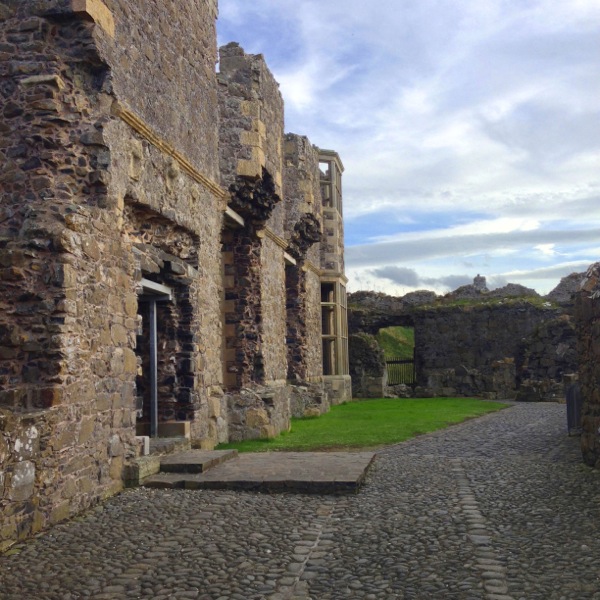 Historically Significant
Historically Significant
Officially, Dunluce Castle is a nationally important archaeological site which protects the ruins from unauthorised change.
Dunluce is the only "scheduled monument" along the Causeway Coast, and the chance to visit such a well preserved 'ruins' is well worth the trip.
Our entire family enjoyed the majesty of this magnificent structure so well preserved. The grounds are well kept, the walking areas are well paved and though cobbled, are relatively even. The entire location is clean and well looked after.

Not only is the castle intact, but you can descend a stairway (external to the castle grounds) and visit the cave beneath Dunluce...
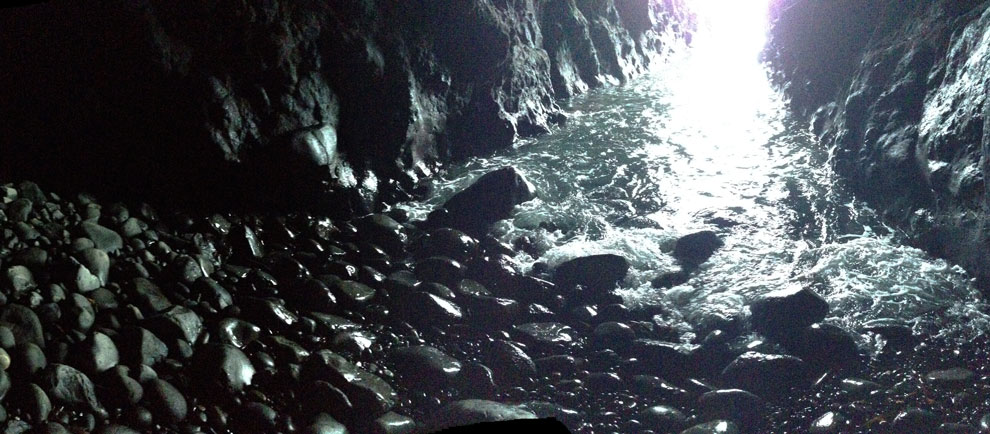
Haunted?
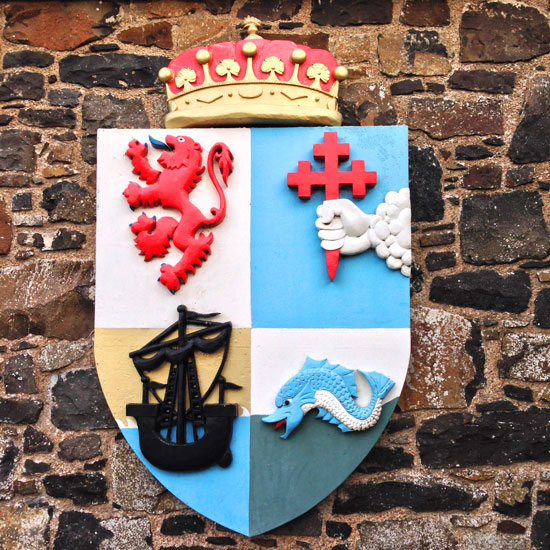 "In 1534, one of the child members of the McQuillan family claimed to have seen a woman in a white dress standing at the edge of the cliff, looking out at the ocean at sunset. He said he watched her fade into the wind. No one believed the child so he retrieved his eldest sibling out the next night to watch for the ghost, but it did not appear.
"In 1534, one of the child members of the McQuillan family claimed to have seen a woman in a white dress standing at the edge of the cliff, looking out at the ocean at sunset. He said he watched her fade into the wind. No one believed the child so he retrieved his eldest sibling out the next night to watch for the ghost, but it did not appear.
Then in the early 1550s, many people claimed to see a woman in a white dress walking down the shore below Castle Dunluce at sunset until finally one day the McQuillan boy, now in his 30's, walked down to the shore and tried to speak with the ghost. After that, it stopped. No reports have ever been made of seeing the woman again." ~ Wikipedia
Map to Dunluce Castle:
Tap the markers for information or pinch and zoom to pan around the map.
